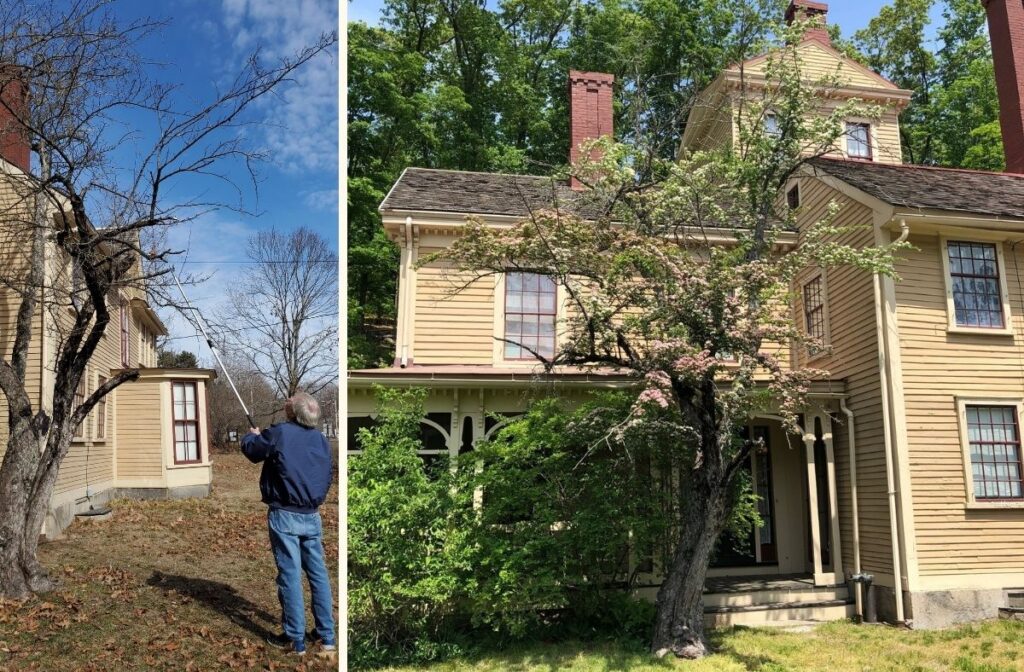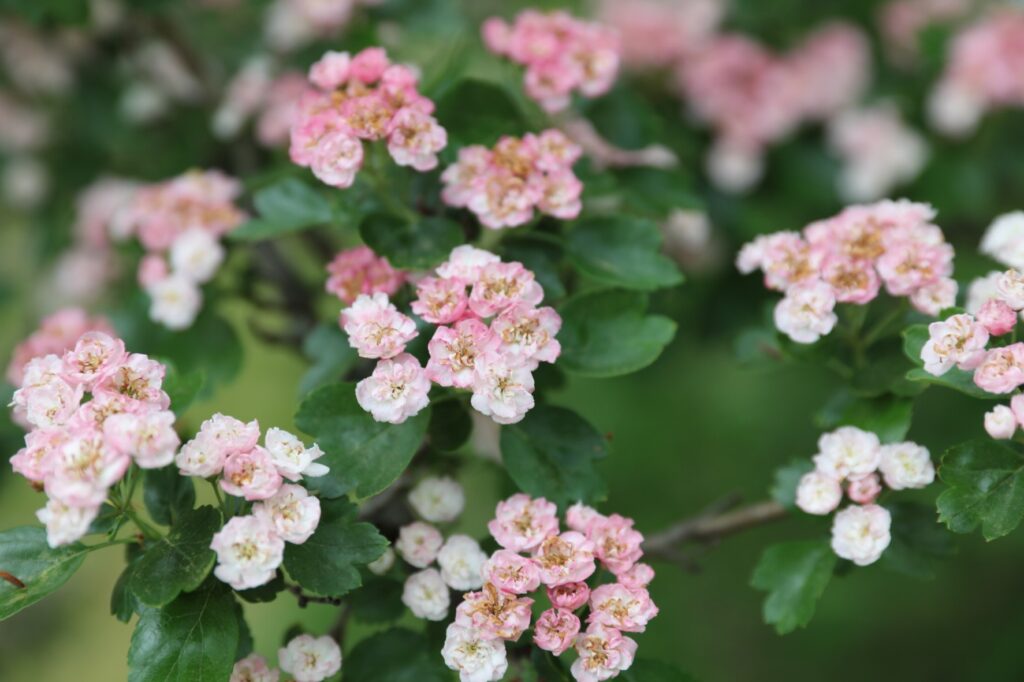
How do we preserve a 150-year old tree with a story?
The English Hawthorn (Crataegus laevigata) growing in front of The Wayside, Home of Authors on Lexington Road in Concord, was likely imported from England and planted by Nathaniel and Sophia Hawthorne in the 1850s. The tree grows by the front door and is unique in that the front half of the tree blooms first with double white flowers that transition to pink, and a week later the back half of the tree blooms with more fragrant single white flowers (see images below). The tree may be two individual trees that fused at a young age.
To preserve this historically significant tree, the best propagation approach is to graft two cuttings onto one rootstock. In mid-March, Plant Propagator Jack Alexander took several small cuttings from the noted hawthorn tree. Recently retired from the Arnold Arboretum of Harvard University, Jack Alexander is a third-generation nurseryman and expert at propagating an array of plant species.
Jack Alexander shares his advice, “As practiced 150 years ago, hawthorn trees are still commonly propagated by grafting a small, cutting-like scion from the desired tree onto a seedling hawthorn, a rootstock. In this case, we have two desired plants and have grafted them onto seedling rootstocks. The technique requires a sharp knife, a deft hand, some knowledge, care, and experience. There are numerous YouTube videos on grafting apples and the process is similar.”
“We are very fortunate to have Jack Alexander’s expertise as the hawthorn is fully mature and in decline,” explains Margie Brown, Natural & Cultural Resource Manager at Minute Man National Historical Park. Brown photographed the tree throughout its bloom season and observed that the white flowers gradually transition to pink. The two cultivars result in a longer bloom season.
In the past five years, the aged hawthorn tree has survived a tornado, ice storms, and severe droughts. The tree sheds a branch or two during each extreme weather event but continues to bloom each June. The flowers attract pollinators while their red berries are consumed by songbirds such as cedar waxwings, blue jays, and northern flickers.
Jack Alexander will return the grafted young trees to the park to be nursery raised. Once a replacement tree reaches four-foot height, it will be planted next to the parent plant, ensuring that the next generation of park visitors can enjoy the beauty and fragrance of Hawthorne’s hawthorn.
Images above from left to right: Jack Alexander is seen taking a cutting in March 2021, the hawthorn tree in bloom in late May. Images below from left to right:
To learn more about how the National Park Service manages historic trees and plants, click here.

